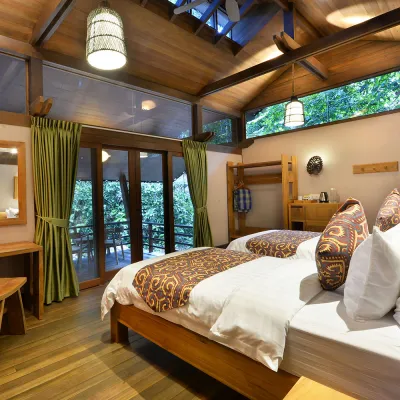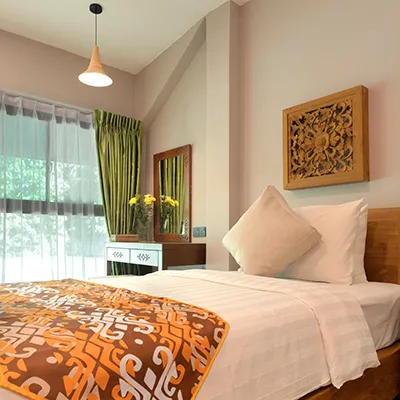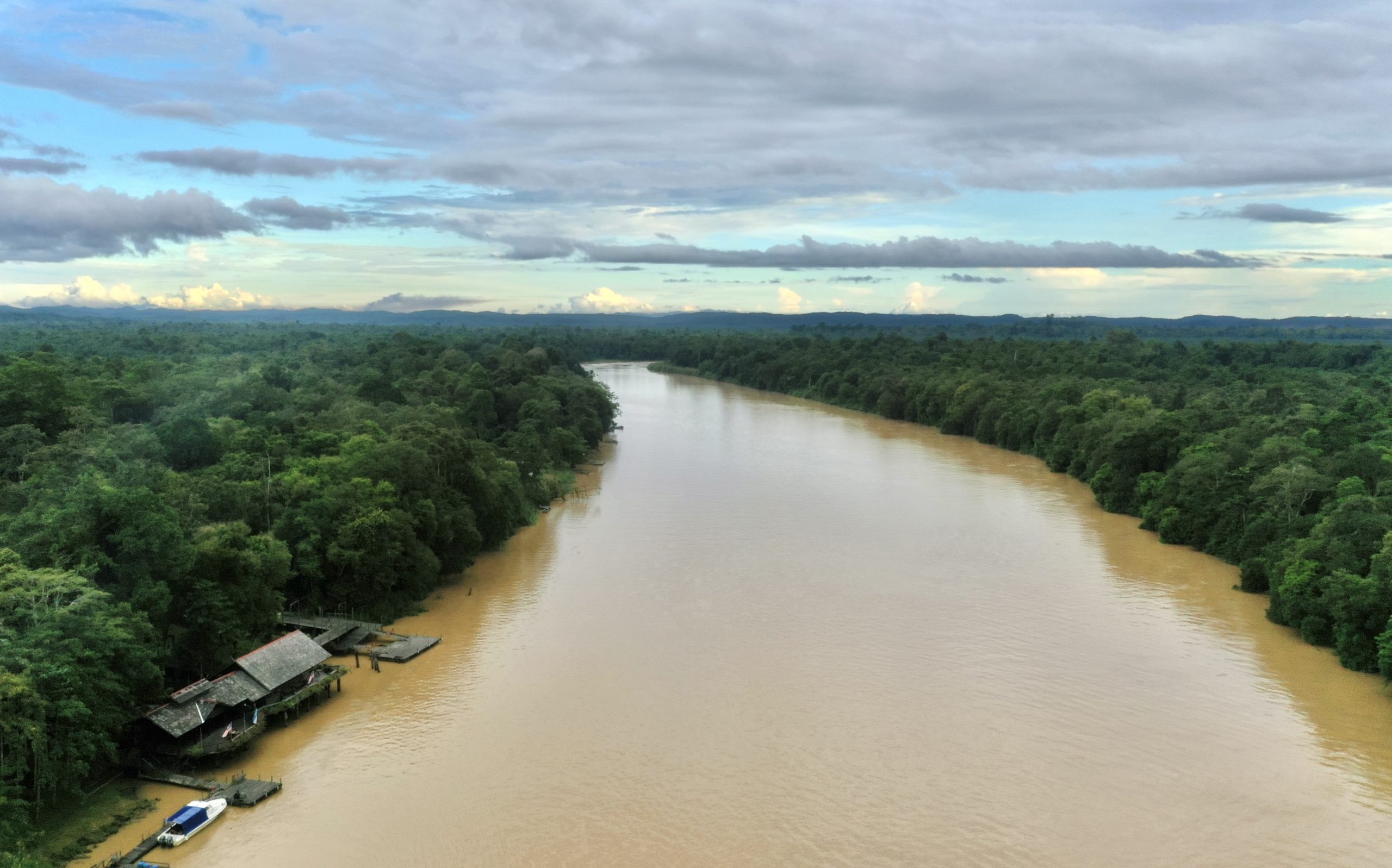 Aerial view of the Lower Kinabatangan River where Sukau Rainforest Lodge resides.
Aerial view of the Lower Kinabatangan River where Sukau Rainforest Lodge resides.
Environmental degradation poses a significant threat to global biodiversity, particularly in ecologically sensitive areas such as tropical rainforests. When constructing eco-lodges like Sukau Rainforest Lodge and Utan Rainforest Lodge, employing low-impact construction techniques is crucial to preserve the natural environment while providing unique and sustainable tourism experiences. Let’s explore how these lodges have embraced sustainable construction practices to minimise their environmental footprint and contribute to the conservation of their surrounding ecosystems.
Site Selection and Planning
One of the fundamental principles of low-impact construction is careful site selection and planning. Both Sukau Rainforest Lodge and Utan Rainforest Lodge were meticulously planned to minimise deforestation and habitat disruption. The lodges were strategically located in areas that required minimal clearing of vegetation, thereby preserving the natural habitats of countless plant and animal species.
Use of Sustainable Materials
The construction of Sukau Rainforest Lodge and Utan Rainforest Lodge involved the use of sustainable materials sourced locally and responsibly. For instance, Sukau Rainforest Lodge, built in 1995, utilised various species of Borneo hardwood for its construction as well as recycled wood dismantled from old buildings. This choice not only provided durability and aesthetic appeal but also reduced the carbon footprint associated with transporting and acquiring materials from distant locations.
By opting for locally sourced materials, the lodges supported the local economy and ensured that the construction process aligned with sustainable forestry practices. Additionally, using materials that blend seamlessly with the natural surroundings helped maintain the visual integrity of the rainforest, minimising the lodges’ impact on the landscape.
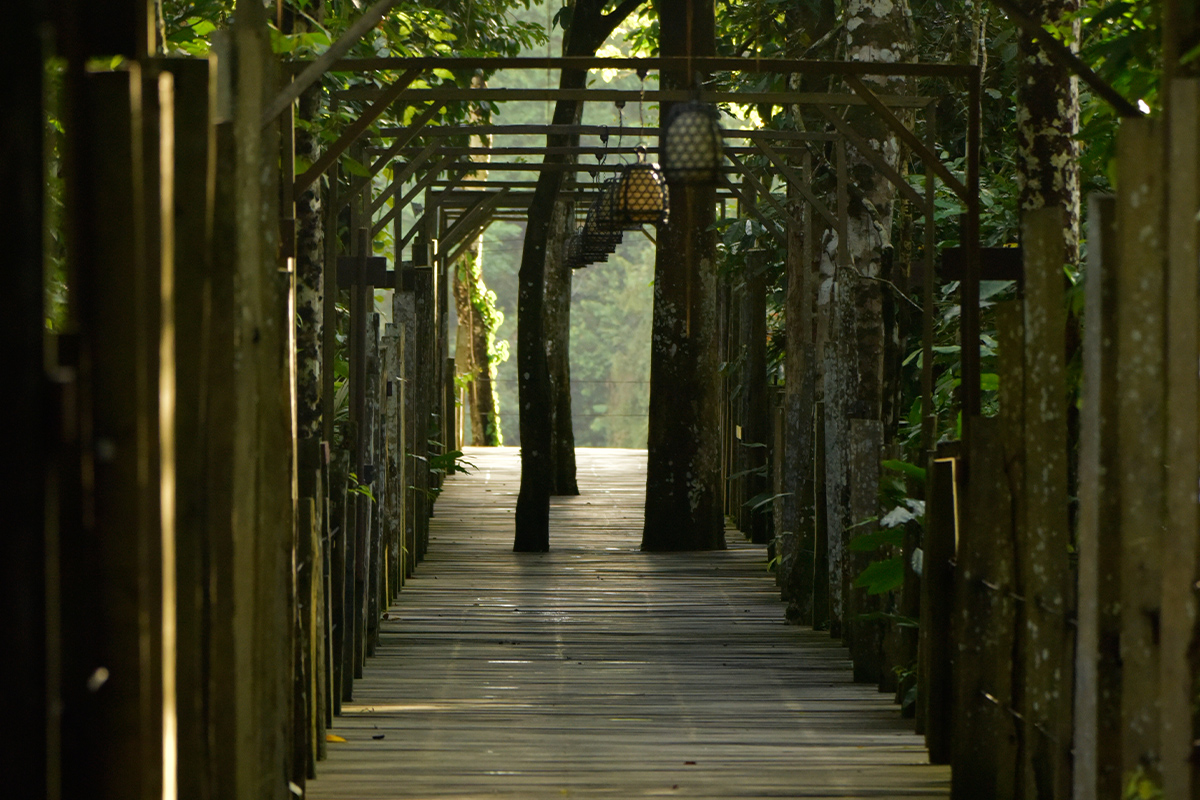 The Attenborough Boardwalk at Sukau Rainforest Lodge which uses low-impact construction.
The Attenborough Boardwalk at Sukau Rainforest Lodge which uses low-impact construction.Elevated Construction
Both lodges adopted elevated construction techniques to reduce ground disturbance and prevent soil erosion. Sukau Rainforest Lodge, for instance, is built on stilts, which allowed for natural water flow and minimised the impact on the forest floor. This approach helped preserve the delicate root systems of trees and vegetation, ensuring that the natural hydrology of the area remained intact.Elevated walkways and platforms such as the Hornbill and Attenborough Boardwalks were also integrated into the design to provide guests with elevated views of the rainforest canopy while minimising their impact on the ground below. This design not only enhances the guest experience but also protects the forest floor from excessive trampling and degradation.
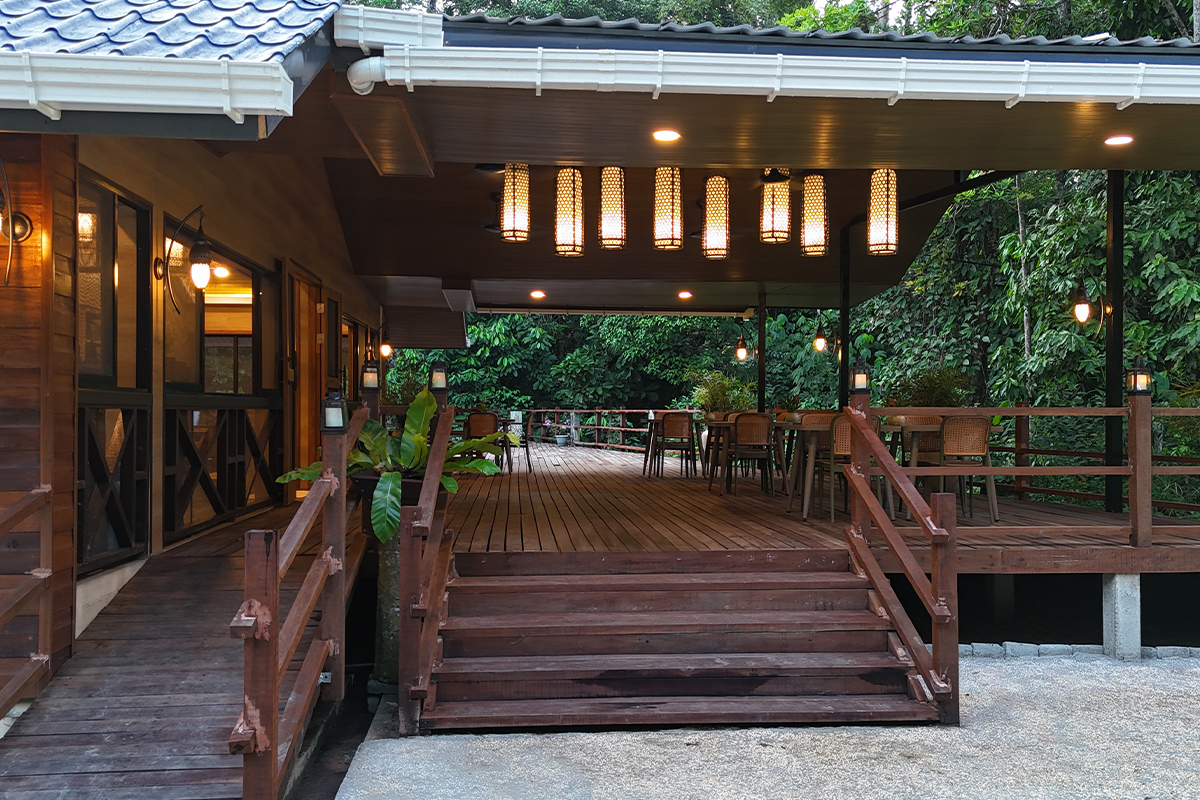 The elevated platform of the Utan Rainforest Lodge resthouse building.
The elevated platform of the Utan Rainforest Lodge resthouse building.Energy Efficiency
Energy efficiency is a cornerstone of sustainable construction, and both lodges have implemented measures to minimise their energy consumption. Sukau Rainforest Lodge, for example, utilises solar-heated showers for its 20 Deluxe Rooms and energy-saving inverter air-conditioning systems. These technologies reduce reliance on fossil fuels and lower greenhouse gas emissions, contributing to the overall sustainability of the lodges.
Furthermore, the lodges were designed to maximise natural ventilation and daylight, reducing the need for artificial lighting and cooling. Cross-ventilation and the strategic placement of windows and openings allow for the circulation of fresh air, keeping indoor spaces comfortable while minimising energy use.
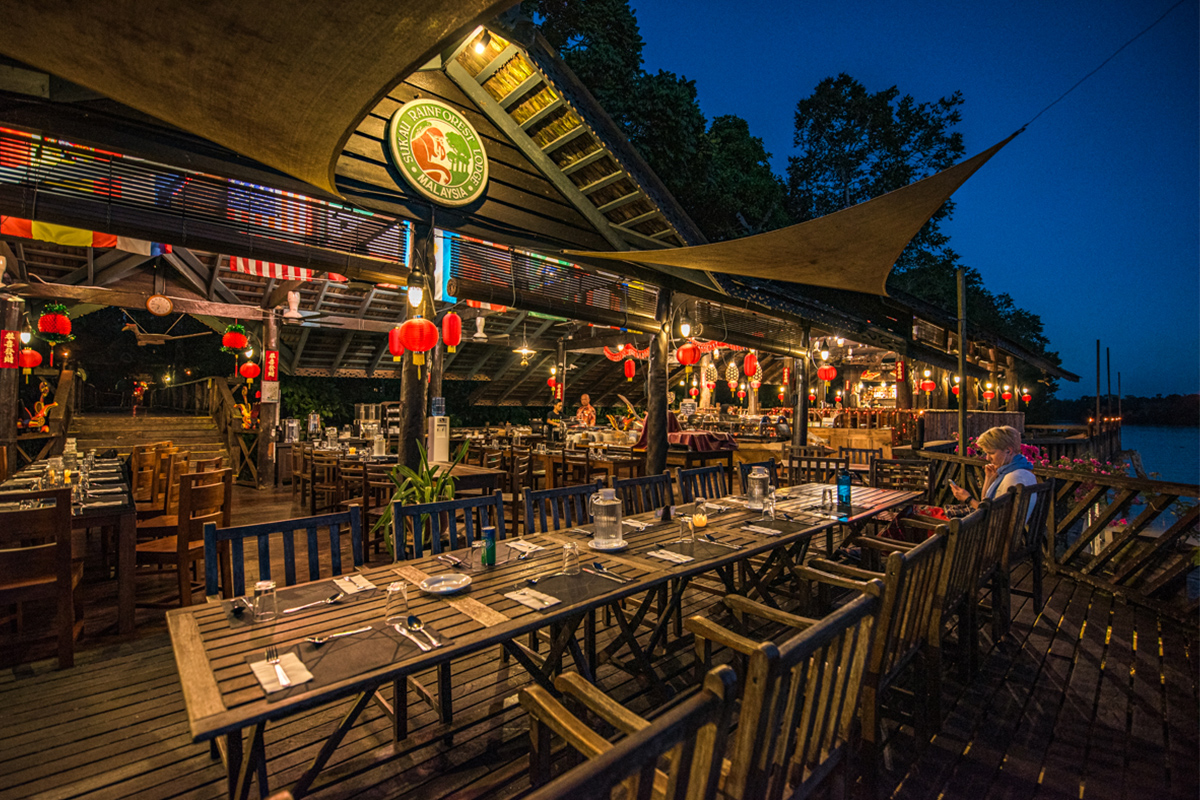 The Melapi Restaurant with open-air concept at Sukau Rainforest Lodge
The Melapi Restaurant with open-air concept at Sukau Rainforest Lodge
Water Conservation
Effective waste management is also essential for minimising the environmental impact of any construction project. Both Sukau Rainforest Lodge and Utan Rainforest Lodge have implemented comprehensive waste management strategies to reduce, reuse, and recycle waste materials.
In addition to construction waste management, the lodges have ongoing waste reduction programs for their daily operations. Reducing single-use plastics and encouraging guests to participate in recycling and river-cleanup efforts are just a few examples of how the lodges continue to prioritise waste reduction. Guests can also opt to join in on the river cleaning activity together with the lodge staff members.
Community Engagement and Education
A key component of the sustainable construction approach at Sukau Rainforest Lodge and Utan Rainforest Lodge is community engagement and education. By involving local communities in the construction process and providing training on sustainable practices, the lodges have fostered a sense of ownership and stewardship among the local population.
The lodges also serve as educational hubs, offering programs and tours that educate guests about the importance of conservation and sustainable living. By raising awareness and promoting responsible tourism, the lodges contribute to the long-term preservation of the rainforest and its biodiversity.
Ongoing Conservation Efforts
The commitment to sustainability at Sukau Rainforest Lodge and Utan Rainforest Lodge extends beyond construction. Both lodges actively participate in ongoing conservation efforts to protect and restore the surrounding ecosystems. These efforts include reforestation projects, wildlife monitoring programs, and partnerships with local conservation organisations.
For example, the Lower Kinabatangan Wildlife Sanctuary, which surrounds Sukau Rainforest Lodge, is home to diverse wildlife, including orangutans, proboscis monkeys, and pygmy elephants. The lodge collaborates with conservation groups to support habitat restoration and wildlife protection initiatives, ensuring that the natural environment remains healthy and thriving.
Conclusion
In conclusion, we are committed to preserving the natural beauty and biodiversity of the rainforest to ensure that future generations can continue to enjoy and learn from these remarkable ecosystems. In a world facing increasing environmental challenges, such initiatives are essential for promoting responsible tourism and safeguarding our planet’s most precious natural resources.
Learn more about Sukau Rainforest Lodge here.

